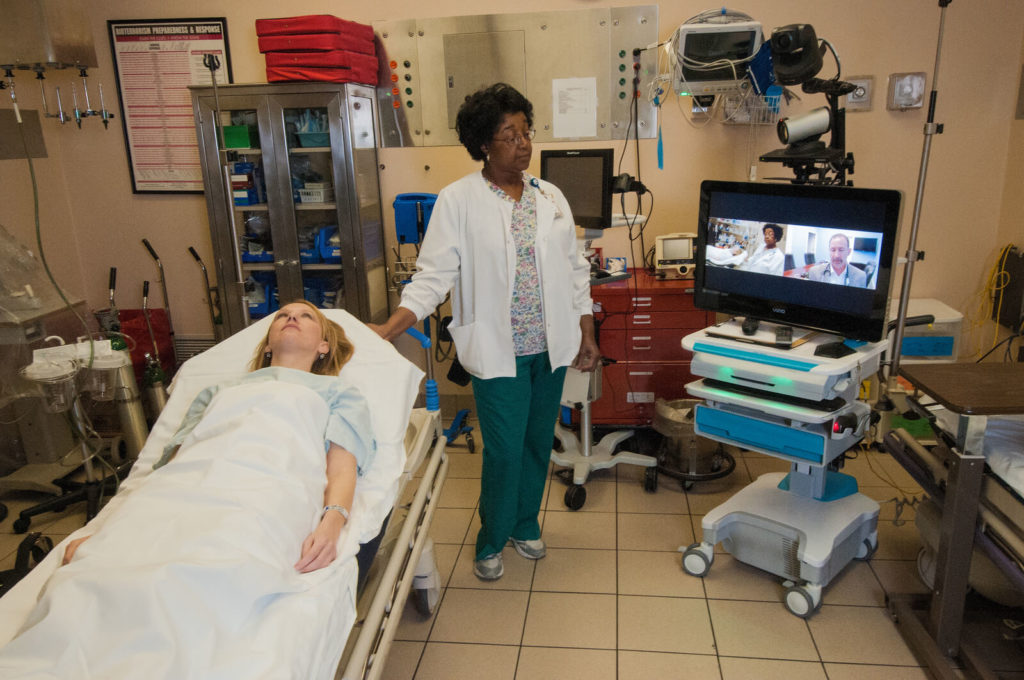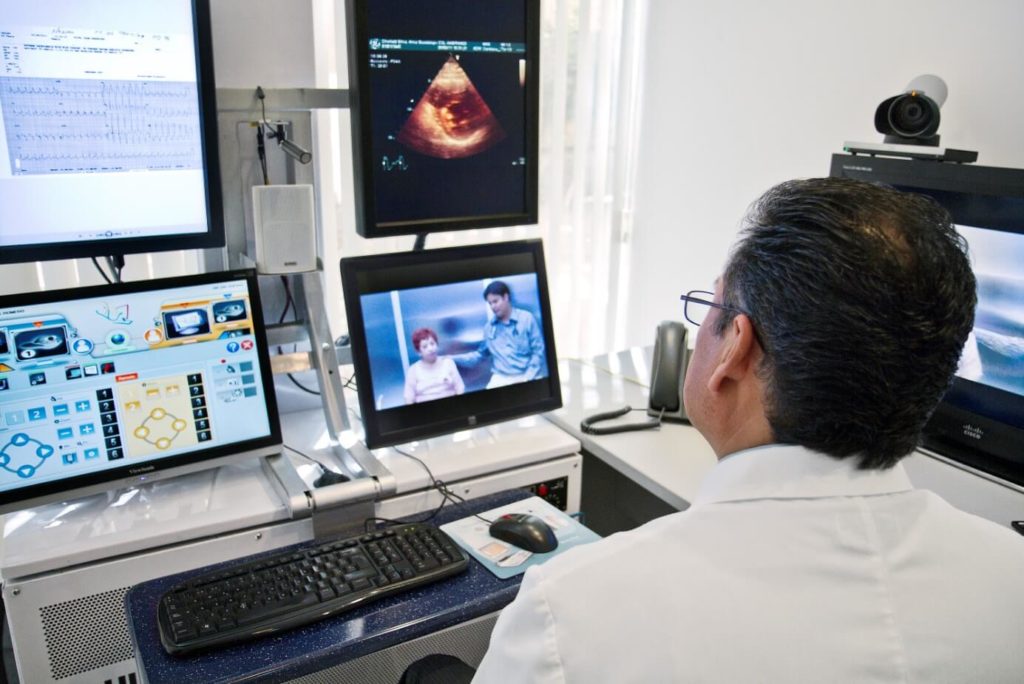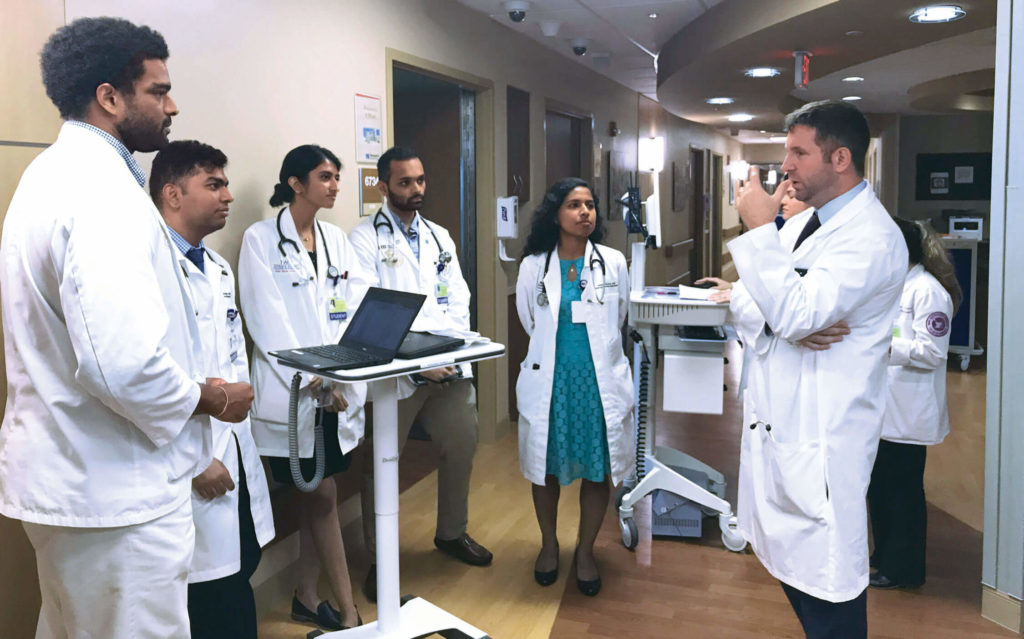Implementing Telemedicine: How to Do it Right

We have already discussed Telehealth, Telemedicine, Telehealth challenges, the collaboration of Computer Vision and Telehealth, and now it is time to learn how you should implement Telemedicine solutions in your healthcare facilities.
In this article, you will find the main tips for the successful implementation of Telemedicine solutions.
Barriers like the lackness of clear regulatory laws for providing services and reimbursements, cultural issues, accessibility, and other problems are slowing the successful adoption of Telemedicine solutions.
The biggest part of the problem is that many companies fail to design an appropriate process to implement their solution.
They end up seeing the technology as the product, and most of the time this leads to solutions that are not aligned with the organization’s goals and needs. Companies so far have not considered strategies to overcome known barriers.
The key for success is to develop a proper vision of the technology as the tool, and the construction of an implementation process that considers all the related components: people, resources, limitations, goals, and objectives.
Defining objectives

First of all, you need to build a clear strategy: What do you want to achieve by implementing your telemedicine solution? Is it aligned with your organization’s objectives? This is important to ensure the final product actually contributes to reaching company goals, which in turn will be the key factor that determines the success of the implementation.
For example, let’s picture a hospital with a small medical staff that wants to increase access to specialists for its patients.
There are a clear goal and purpose — to provide access to specialists for hospitalized patients.
For example, it would have a moving workstation with a screen, microphone, and camera. Nurses or doctors on site will be able to move the workstation to the patient’s room to connect the patient to a remote specialist within minutes.
That’s it — we’ve combined the hospital’s goal with a plan for implementing a telemedicine solution that can achieve it.
The key is to determine what the solution can achieve in terms of what the organization wants.
Maximum use should be one of the goals. If people do not use the program, support will be reduced. If many people use the system frequently, it will be much easier to get support. It is very difficult to reduce a program that provides a respectable amount of service.
A controversial characteristic of implementing unsuccessful telemedicine programs was that they somehow considered themselves separate from the general organization and had independent goals. Those programs had lost support overtime or had been relegated to a small and often experimental role in the provision of health care.
Business model

At this stage, the business model must be defined. Even if some patients did not object to paying for telemedicine services, it was important to bear in mind that the current rules referred to a policy of reimbursement, services, and conditions covered.
For example:
- Access to Care Model. The provision of care in remote locations or in population groups that do not have access to care because of geographical location or resource constraints. Examples include remote villages in Alaska and Canada, as well as developing countries and poor urban environments.
- Cost Savings Model. Provide alternative methods of healthcare delivery to reduce costs. Examples include prisons, industrial facilities, the military, etc. where, by implementing a telemedicine solution, transportation costs are reduced or eliminated, which allows resources to be distributed among hospitals to reduce costs.
- Access to Market Model. Expanding the market that can be served by a healthcare provider, which allows services and expertise to be provided over long distances.
Once you understand the goals of the entire organization, clearly set out the goals of your telemedicine program. Show clearly how the goals of your program contribute to the overall goals of your organization. Finally, clearly articulate a vision for what will be achieved as a result of your telemedicine program.
Long-term financial plan

Even if financial considerations are not the primary goal of your program, they remain critical. Programs that start with a strong financial rationale and fit the dimensions of the plan can more easily collect future funding and support.
Start with measurements that support your organization’s business goals. Set clear short- and long-term financial goals.
For example:
- If this is a revenue model, show clear revenue management.
- If it is an economic model, show your benchmark and method to clearly measure savings.
- If it is a strategic model, show a way to measure strategic input or output.
Develop your financial plan and define the indicators you will use to achieve its goals. Make sure that these measurements are clear and at least tacitly accepted by management. Failure to do so is a common and sometimes fatal mistake.
If you don’t install and agree to the preliminary measurements, someone will eventually install them for you, and they may not be to your liking or benefit.
Look for current income or a measure of indirect financial contribution to the organization. Special emphasis on long-term sustainability is a common feature of successful programs.
The right technology

After you have defined your goals and thought about how this will work, it is time to look at the technologies that you will need.
The mobile app trend is the market leader. Simple home medical devices are also available at affordable prices. These devices can perform tasks such as taking vital organs and diagnosing ear infections, monitoring glucose levels, or measuring blood pressure; in other words, they allow patients to gather the medical information they need to make a diagnosis.
There are also real-time technologies, such as WebRTC, that provide excellent communication capabilities for browsers and mobile devices, as well as secure media content transfer between participants.
You can decide whether to use a local solution consisting of hosting your own infrastructure or to use a Communication-Platform-as-a-Service (CPaaS) provider such as Tokbox or Vidyo.
These technologies, combined with other popular web and mobile platforms such as React, allow you to create communication applications similar to those you have already encountered, such as Zoom or Facetime.
Think about what rules exist and how they affect the tools you use. When storing patient information, you should provide security mechanisms to ensure that the data does not fall into the wrong hands.
Legislation such as HIPAA (Health Insurance Mobility and Accountability Act) regulates the storage and transfer of this information, so it is important to ensure that the infrastructure that will support your application complies with these rules.
In summary, the basic idea is to take a close look at the processes that you have developed on paper and choose the tools that best fit what you want to achieve with the right security measures.
Assure effective training

Training is critical. Successful programs plan to deliver well-defined training in layers. The basic foundation for training should include:
- Communication technology
- Clinical technology
- Diagnostic device user training for both send and receive sites
- Workflow and protocols of care and procedures for use of devices
- Troubleshooting and access to product and technical support
Create a value
The keyword is convenience. It’s crucial to create something that reduces the patient’s time in the waiting rooms and provides immediate, high-quality primary care.
It’s equally important for you to ensure that the main goals of your telemedicine solution are to reduce costs, increase access, improve the skills of your staff and enhance the quality of services.
Patients require better customer service from suppliers, and telemedicine is one way to reach people more effectively.
Implementing Telemedicine project the right way

Everything above is just the basics, and many more nuances emerge around them. For a project to be successful, you need to consider all the details: from the type of hardware, software, infrastructure, to scenarios of use and the real need for such a project. All details do not fit in one article, even in a series of articles — there are always individual features that all work differently.
To be sure that your idea will be implemented successfully, without extra costs and in time rather than put at the back of the drawer — contact us. We know all the inner workings of medical organizations, work with the TOP-50 world hospitals, and will gladly assist you with your custom software development.







